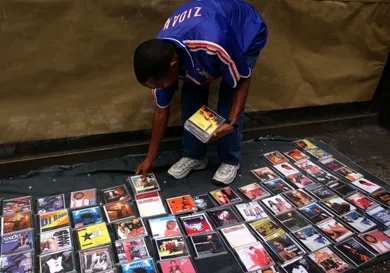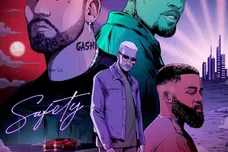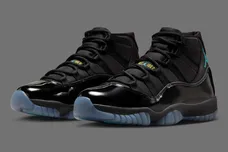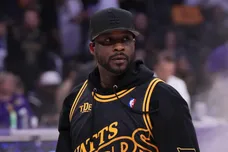R.I.P. to the CD can't even play my hits
Cause new computers ship without the means to play the shit
We love the boosted speed
We love the memory
It got me feeling like we're nothing like we used to be
- Erick Arc Elliott
Flatbush Zombies penned an interesting eulogy to the CD on their 3001: Laced Odyssey album. Yes, it is fair to pronounce the compact disc dead. Though they still line record store walls, the majority of modern music sales have since transitioned to streaming. For some context, A Boogie Wit Da Hoodie’s Hoodie SZN spent weeks at the top of the charts, despite only moving 823 physical copies. In response, A Boogie forsook the CD altogether, issuing a triumphant cry of “streaming rules!” “Anybody that's in this era now is always going to do more streaming than sales,” reflects A Boogie. “When I look at it, like, man, fu*k sales. We ain't even got no CDs out."
Anybody who grew up during the CD era has at least one fond and likely formative memory. Consider The Game reflecting on a veritable crossroads during a verse on Nas’ “Hustlers.” “1995, eleven years from today, I'm in the record shop with choices to make,” he raps. “Illmatic on the top shelf, The Chronic on the left, homie, wanna cop both but only got a 20 on me.” Young Game ultimately opted for thievery, using the twenty to cop a dub sack, presumably enjoyed in tandem with his new albums. Yet the fact remains. It was a simpler time, and hard decisions had to be made. Not everybody had the disposable income to cop their desired fill. In my youth, I once spent twenty-eight dollars on Bone Thugs-N-Harmony’s The Art Of War. At that price, living with an entire project to maximize replay value isn’t an option - it’s a necessity.
Peter Macdiarmid/Getty Images
Those who actively saved to buy CDs likely remember the primary means of consumption. The Discman and the car stereo were two of the bigger ones. And unless you were packing one of those cumbersome “disc folders,” transportation became a hassle. As a result, many were forced to travel with minimal CDs on deck, promoting a longer shelf-life for the chosen albums. While it’s difficult to prove beyond anecdotal evidence, I imagine that many listeners ended up combing through their collection from start-to-finish. While the co-existing option of music television (with channels like BET, MTV, and Much Vibe) helped push the single, deeper cuts were given ample space to breathe. It wasn’t so simple as loading up a playlist or even concocting your own. To listen to a CD, you had to open a case, load the disc, and skip to the song of your choosing. Not exactly arduous as far as tasks are concerned, but hardly the instant gratification of today.
It’s hard not to look at the Compact Disc without feeling pangs of nostalgia. Nor is it fair to dismiss streaming as a positive listening experience. In many ways, the vast library available at a moment’s notice is the epitome of convenience. Yet such an option can possibly lead to the creation of scatterbrained listening habits. Should you be midway through your chosen album, and one of the featured artists sparks a surge of inspiration, it’s only a simple click to jump ship entirely. Compare that to the days of the CD, where collections were largely reserved a select number of carefully chosen projects.
It’s not entirely different from today’s primary method of consuming film and television. With traditional movie shops on the decline, many have become dependent on whatever Netflix (or their chosen platform) serves them. It’s not uncommon to hear somebody ask “is it on Netflix?” upon receiving a film recommendation. With convenience at the forefront, the art of selective research has become diluted. Mere tinges of curiosity can become realized with little to no risk. Where CDs were concerned, one had to do their due diligence, as banking on the single alone was somewhat of a gamble. Circling back to the Netflix analogy, compare it to the dominant “tastemaking” playlists. Many listeners remain dependent on whatever is presented to them, forgetting that an entire world exists beyond what is served on the homepage.
Flatbush Zombies - RIP CD
Take a second to think about the last album you listened to from start to finish. It’s sometimes easy to forget that any given artist worth their salt - at least, in a pre-stream-trolling era - likely spent inordinate amounts of time crafting their work. The sequencing process is not decided willy-nilly. Nor is a tracklist meant to be dissected and strewn across a half-dozen playlists. That’s not to suggest crafting playlists is a crime, but it’s sometimes beneficial to think of an album as a book, with songs making up the individual chapters. Some work better in the context of others, with chemistry discovered upon repeat linear listens. Other songs need room to grow, to be discovered under a new light. Sometimes, such a process requires patience and dedication, qualities not always encouraged in today’s age of everything now. Of course, ownership of a CD did not guarantee those qualities, but the nature of listening to one came with a sense of intimacy. Physical objects were held. Liner notes were made available. An exchange was made.
Is listening to an album from start to finish the ideal way to consume a piece of work? That is certainly up for debate, one that many musicians and purists would surely salivate to have. In that sense, cassette tapes and record players lent themselves wonderfully to the cause. And while the latter has re-emerged as a dominant method of consuming physical albums, the former has all but gone extinct. Seeing as many a millennial currently has a newfangled vinly player in their home, it possible that the CD will ever return to dominance? As of now, it feels unlikely. Streaming is simply too powerful a presence at the moment, and the sheer convenience will make it tough to dethrone. But is it the ideal manner of musical consumption?
Perhaps in some regards. Yet the streaming era has bred unfortunate listening habits from both artists and listeners alike. We’ve already seen Kodak Black line his Dying To Live album with unfortunate (and tone-shifting) collaborations with Lil Pump and Juice WRLD, all in the name of boosting his digital numbers. Migos, Juice WRLD, and Drake all dropped off extensive projects, clearly designed to maximize streaming digits; is it a coincidence that the projects were commercial successes, though met with critical apathy? Maybe the biggest issue to derive from the streaming era is one of perception. The narrative that an album should be experienced from front to back, like a novel or a film, has become a foolish notion to many. And yet such a notion has driven some of the finest albums of our times, across all genres.
Revisit The Game’s earlier crossroads. Were he born today, he'd never be faced with such a dilemma. Instead, he'd have access to the complete Nas discography, free to explore at his convenience in whatever order he so chooses. Perhaps he'd even opt for "The Nas Essentials" playlist to save some time. And if he didn't have Apple Music, he wouldn't even be able to hear The Chronic to begin with.
Official Artist Artwork
For more reflections on the music industry, try:
Does Going Platinum Still Carry The Same Weight?
Stream Trolling: The Problem With Excessively Long Tracklists
The Significance Of An Album's "Title Track"







